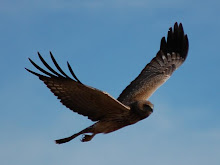
OK, technically they start life a bit before that as an exquisitely shaped egg on a strand of silk but that ruins my Ugly Duckling metaphor! The sticky silk prevents predators from reaching the eggs (which would be easy if the eggs were laid straight onto the leaves).

The antlion spends much of its time lurking underground in a specially designed ant trap. The trap is a conical hole in sandy ground. Ants fall down the slippery sides and are eaten by the antlion waiting just under the sand. If you dig into these holes you can get a good look at an antlion, but they are quite ugly. Don't say you weren't warned!
[pic of antlion holes]
The adult lacewing is the "beautiful swan". Somehow the hideous larvae grows into an elegant creature with long lacey wings and resplendent colours. This one is called the Blue Eyes Lacewing.


Here are some close-ups:


Green Lacewings are the most common type I've seen. On a summer night there can be several of them on the outside of the bathroom window attracted to the light.

In the bush, they are not so easy to spot!

This next example is so extraordinary I didn't even recognize it as a lacewing. I thought instead it was a bizarre type of moth! I have only ever seen one other of its kind and that was in a drawer at the Australian Museum. This is called a Silky Lacewing.




The website Insects of Townsville has a fantastic image of a Silky Lacewing here.
This lacewing appeared on some corn growing at school. At other times I have seen them hiding under branches.


This lacewing was seen at a farmhouse in NSW. Sadly, the photos fail to capture the sheer brilliance of its silvery wings.


Sometimes the photo opportunity comes at a high price. This lacewing was caught in a spider's web. Despite the similarity, the smaller creatures are not lacewings.

More information:
Ant lions
Australian lacewings build toughest silk - ABC science
Lacewings and antlions - CSIRO
Lacewings and antlions - Australian museum
Lacewings - Wikipedia



